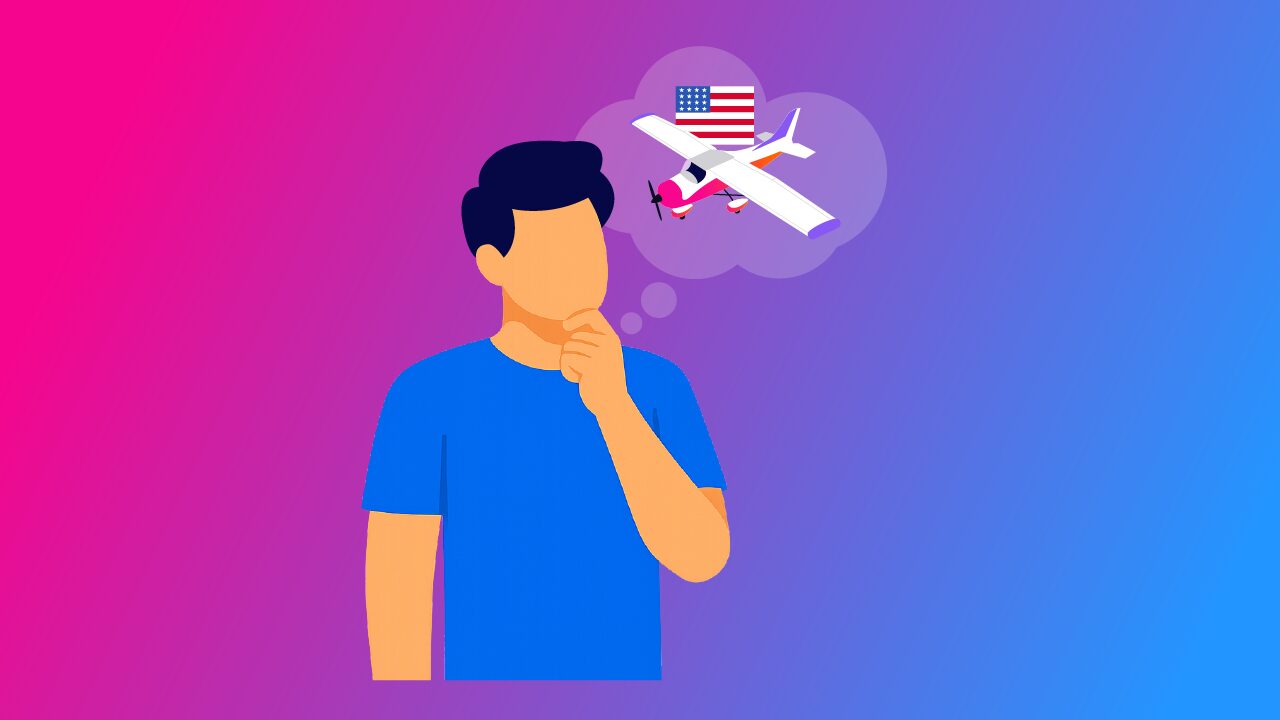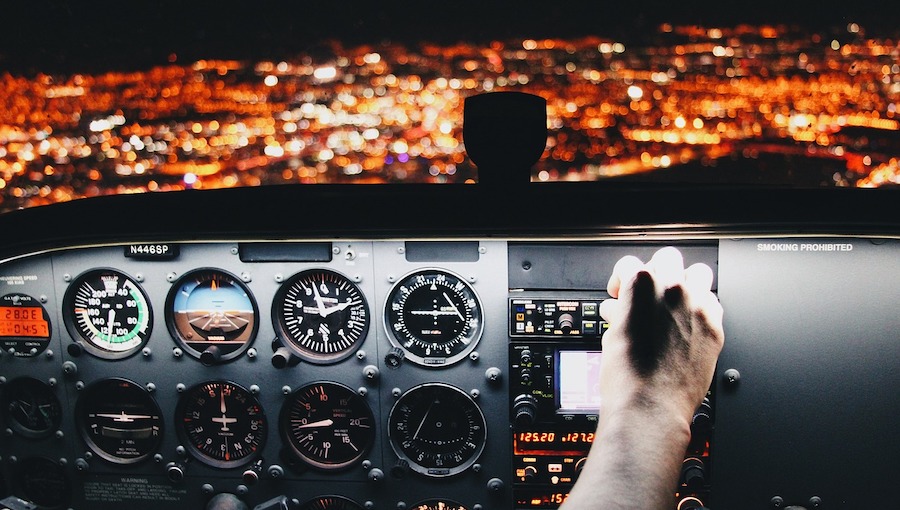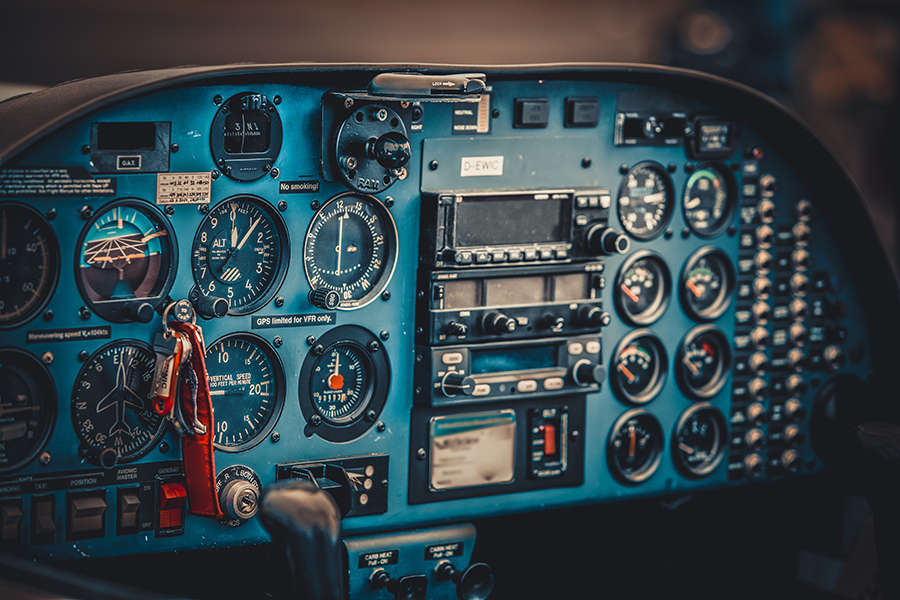-
Key Takeaways
-
The Flight Training Security Program (FTSP)
-
Visa Requirements
-
What If I Already Have an ICAO License?
-
Application Requirements Under the New TSA FTSP Rule (Effective July 30, 2024)
- Who Needs an STA?
- Validity Period and Notification
- Processing Fees
-
A Step-By-Step Guide to Obtaining Your Pilot Certificate
- Step 1 – Check Your Visa
- Step 2 – Notify Your Flight School
- Step 3 – Register at the FTSP Website
- Step 4 – Wait for Your Flight School to Confirm
- Step 5 – Pay the Fee
- Step 6 – Receive Preliminary Approval
- Step 7 – Submit Fingerprints
- Step 8 – Start Your Flight Training!
- Processing Times
-
Conclusion
The U.S. is one of the top destinations for flight training. Many international students come here to earn their wings, and others living in the U.S. want to learn to fly too.
But with strict security regulations, many non-citizens wonder if they’re even allowed to train. The good news is that yes, you can, but you’ll need TSA approval first.
Let’s explore what non-U.S. citizens need to know about flight training in the United States.
Key Takeaways
- Non-U.S. citizens need TSA approval through the Flight Training Security Program (FTSP) to start flight training.
- You must have the right visa; B-1/B-2 visas don’t qualify.
- ICAO license holders can convert to an FAA Private Pilot Certificate.
- FTSP approval requires registration, fingerprinting, and a fee.
The Flight Training Security Program (FTSP)
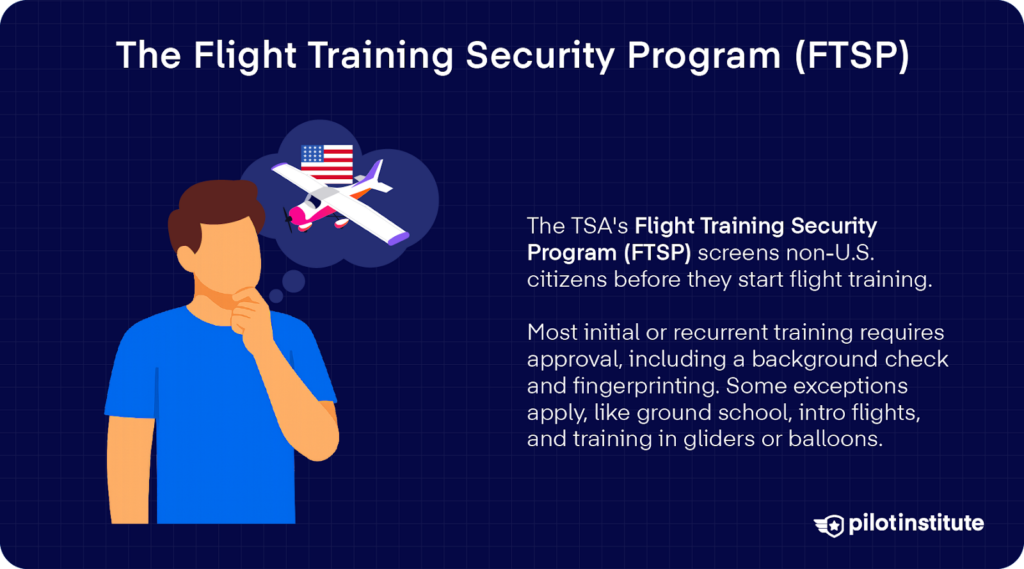
The Flight Training Security Program (FTSP), formerly known as the Alien Flight Student Program (AFSP), is operated by the TSA to make sure that individuals seeking flight training from any FAA-certificated flight school or other flight training provider (including individual flight instructors and Part 142 training centers) do not pose a security risk.
To undergo flight training, you must register on the FTSP official website. After applying, TSA will review your application and grant or deny permission.
You must apply to the FTSP before initiating flight training if:
- You are a non-US citizen planning to train for an initial U.S. airman certificate (Private, Sport, or Recreational), an Instrument Rating, a Multi-engine Rating, or a Type Rating.
- Non‑U.S. citizens pursuing any initial or recurrent flight training must complete an STA.
The STA process includes submitting passport/visa information, citizenship history, fingerprints, and paying the fee, regardless of aircraft weight.
You are exempt from the FTSP if:
- You are generally exempt from FTSP requirements if you are only undergoing certain types of recurrent training, like a flight review or an instrument proficiency check (IPC), that are not for maintaining or renewing a type rating. Recurrent training to maintain or renew a type rating does require FTSP approval under the new rule (effective July 30, 2024).
- You’re only doing ground school.
- You are flying balloons, gliders, ultralights, but powered parachutes, weight-shift, and LSAs are not exempt and do require FTSP approval.
- You’re taking a discovery/introductory flight.
- Your training is by or endorsed by the U.S. DoD or Coast Guard.
Visa Requirements
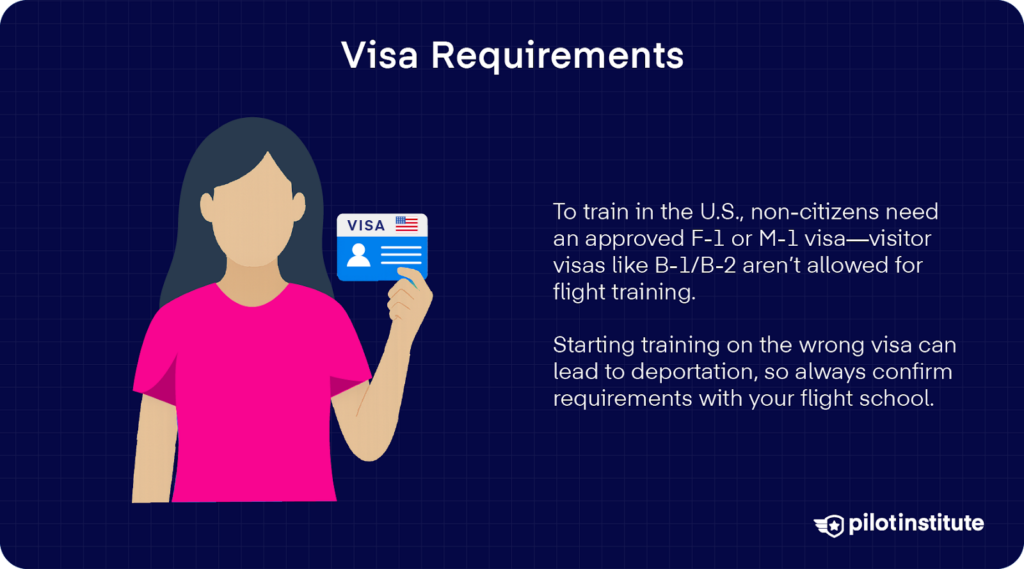
To undergo training in the United States, you will need to satisfy specific visa requirements that are separate from the TSA AFSP requirements.
According to U.S. immigration regulations (specifically 8 CFR 214.2(b)(7), enforced by agencies like U.S. Citizenship and Immigration Services – USCIS), any non-US citizen who enters the United States on a B-1 or B-2 (visitor’s) visa generally cannot enroll in a course of study, which includes most flight training leading to a certificate.
For training, you require either an F-1 or M-1 nonimmigrant visa and cannot enroll in a flight training course until your F-1 or M-1 nonimmigrant visa application is approved.
If you are already in the United States on a B-1 or B-2 visa and would like to undergo flight training, you must either leave the country and seek readmission on an F-1 or M-1 nonimmigrant visa or apply for and obtain a change of status (8 CFR 248).
Remember that undergoing flight training with an incorrect visa is a violation of your immigration status and could result in your arrest and deportation.
It is recommended that you contact the flight school that you would like to undergo training at in order to receive more detailed information regarding the application process; they will likely be able to assist with your application.
What If I Already Have an ICAO License?
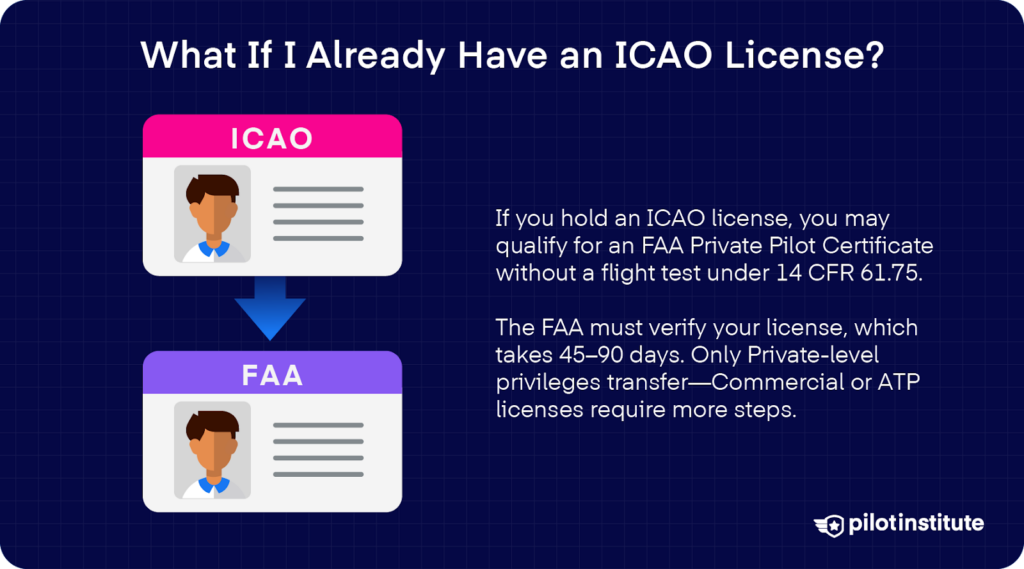
If you already have an ICAO (International Civil Aviation Organization) license (Private Pilot level or higher), you can usually obtain a U.S. (FAA) Private Pilot Certificate based on your foreign license without needing to pass an additional FAA practical (flight) test, if all FAA requirements under 14 CFR 61.75 are met.
The FAA will verify the validity and currency of the foreign license with the applicable National Aviation Authority (more commonly referred to as a Civil Aviation Authority). Verification takes approximately 45 to 90 days to complete.
Your ICAO Commercial Pilot License can only be directly converted to an FAA Private Pilot License.
Commercial or ATP license conversions have significantly more requirements.
You can find more information on the conversion process in our article on How to Convert a Foreign Pilot License to an FAA Certificate.
Application Requirements Under the New TSA FTSP Rule (Effective July 30, 2024)
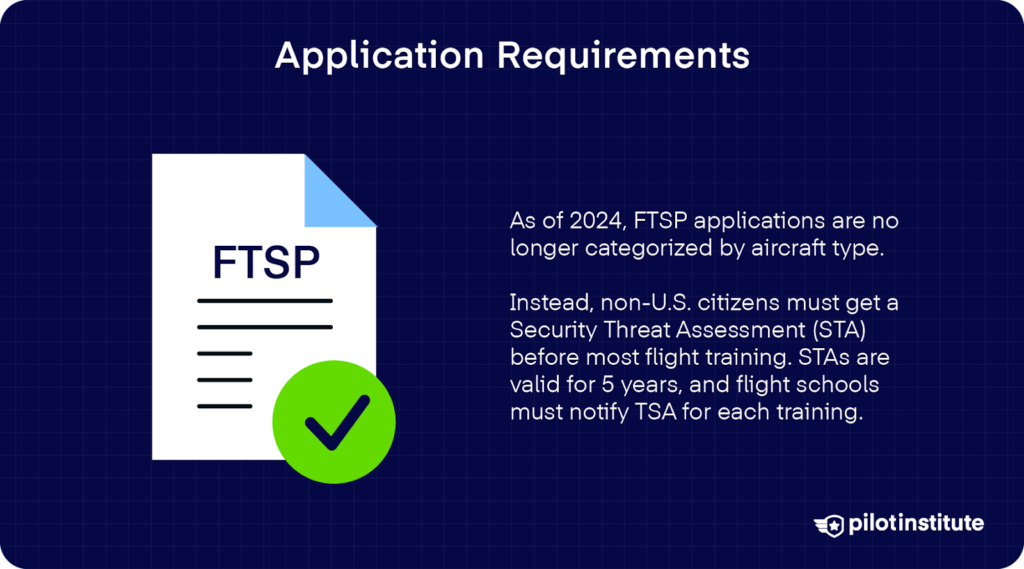
The TSA no longer uses the legacy Category 1–4 structure that classified FTSP applications based on aircraft weight or training type. Now, the 2024 FTSP Final Rule focuses on the type of training and introduces a time-based Security Threat Assessment (STA) model.
Who Needs an STA?
Under the new FTSP rule, non-U.S. citizens need to obtain a satisfactory Security Threat Assessment (STA) from the TSA before beginning flight training in the United States.
This requirement applies to those pursuing: an initial FAA certificate (like a Private, Sport, or Recreational), an Instrument Rating, a Multi-Engine Rating, a Type Rating, or recurrent training to maintain or regain currency for any of the previously mentioned.
Validity Period and Notification
The STA results in a Determination of Eligibility that is valid for up to five years. During this period, flight schools must notify the TSA each time a covered training event takes place, even though the applicant does not need to reapply.
Processing Fees
The TSA charges a non-refundable processing fee for each STA application (currently ~$125–$140), regardless of the type of training or school involved.
A Step-By-Step Guide to Obtaining Your Pilot Certificate
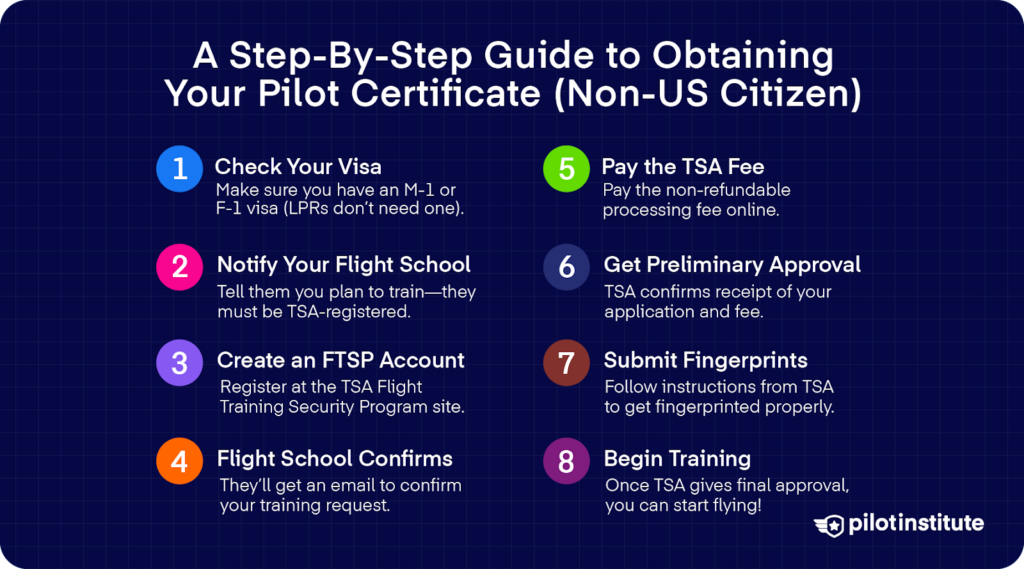
There is a lot of information concerning how to obtain your pilot certificate if you are a non-US citizen, and it can quickly become confusing. Below, we’ll outline the steps needed to ensure you can begin training towards an FAA certificate or rating.
Step 1 – Check Your Visa
Make sure you have an F-1 or M-1 visa. Lawful Permanent Residents (LPRs) don’t need a visa. You will need a visa that will allow you to undergo flight training in the United States.
Contact the flight school you intend to undergo training at or the Department of Homeland Security if you are unsure about the visa requirements for flight training.
Step 2 – Notify Your Flight School
You will need to notify the flight training provider (flight school or individual CFI) that you intend to undergo flight training with.
Under the new FTSP rule, all flight training providers must be registered with the TSA and have a designated Security Coordinator. They will need to complete paperwork on their side regarding your training request.
Step 3 – Register at the FTSP Website
Visit the Flight Training Security Program website and create an account. You will receive a user I.D. immediately after registering, and a password will be sent via email.
If you already have an account from the Flight Training Candidate Checks Program (FTCCP), you do not need to create another one.
After creating an account, you can continue the application process. Once you have completed the application, your training request status will be available on the AFSP candidate home page.
You can only cancel a training request if it is in “draft” status.
Step 4 – Wait for Your Flight School to Confirm
Your flight school must acknowledge the training request before your application is sent to the TSA. Your flight school will receive an email prompting them to confirm the training request.
Step 5 – Pay the Fee
After your flight school confirms your training request, you will receive an email asking you to pay the processing fee via the FTSP website. The processing fee is non-refundable, meaning you will not receive a refund of the processing fee if your application is denied.
Step 6 – Receive Preliminary Approval
Once the TSA has received the payment, they will notify you and your flight school of your “Preliminary Approval.” This preliminary approval only confirms that the TSA has successfully received your application and processing fee; it does not grant you permission to receive training.
The preliminary approval confirmation should not take more than seven business days. Contact the TSA help desk if you have not received preliminary approval within seven days.
Step 7 – Submit Fingerprints
The next step after receiving preliminary approval is submitting your fingerprints. Do not submit fingerprints before receiving an email with the subject “Fingerprint Instructions”.
You do not have to resubmit your fingerprints if you have submitted your fingerprints for a previous AFSP training request.
At an international or domestic fingerprinting location, your fingerprints will be collected by or under the supervision of one of the following:
- An entity approved by the Federal Bureau of Investigation (FBI) or the Transportation Security Administration (TSA), including airports that possess appropriate fingerprint collection equipment and personnel certified to capture fingerprints such as NFCC Certified Fingerprint Technicians.
- A State, Federal, or Local Law Enforcement Agency of the United States.
You will need to find a local or international Fingerprint Collection Agency.
You will have to bring a copy of the “Fingerprint Instructions” email and your passport, residential alien card, or U.S. driver’s license.
Step 8 – Start Your Flight Training!
Once you have received your Determination of Eligibility from TSA (it is valid for up to five years), your chosen flight training provider needs to notify TSA of your specific training event.
After the provider gets confirmation from TSA for that event (following any applicable waiting period), you can begin your training.
You must remain eligible throughout the duration of your training period, and your Determination of Eligibility is valid for up to five years, and during that time TSA continues to conducts recurrent vetting.
You will also have to take a photo when you arrive at your flight school, and they will upload this photo to the FTSP website.
Processing Times
The amount of time the processing of your Security Threat Assessment (STA) application takes could vary, but TSA usually aims to process complete applications within 30 calendar days.
For specific flight training event notifications submitted by your provider, there are waiting periods before your training can start. This can be 5 business days after TSA acknowledgment if you are eligible for expedited processing, or up to 30 days otherwise.
Conclusion
Being approved by the TSA to undergo training may seem cumbersome, but it is all a part of an effort to keep the skies safe. Consider choosing a flight school with prior experience in training international students, which will benefit you greatly during this process.
